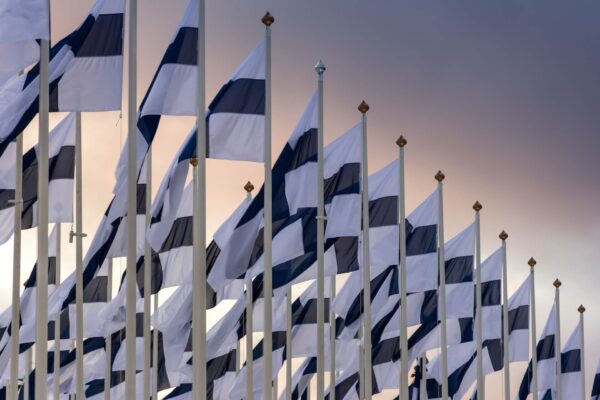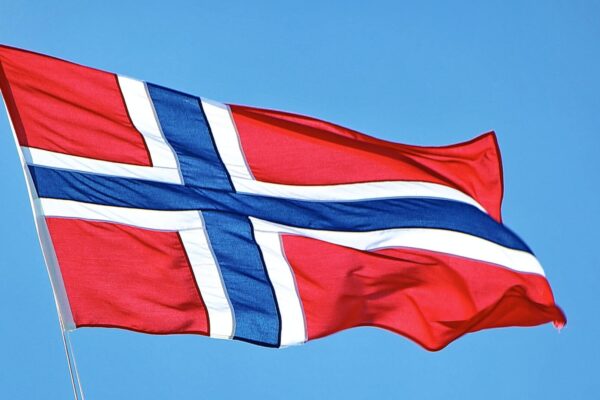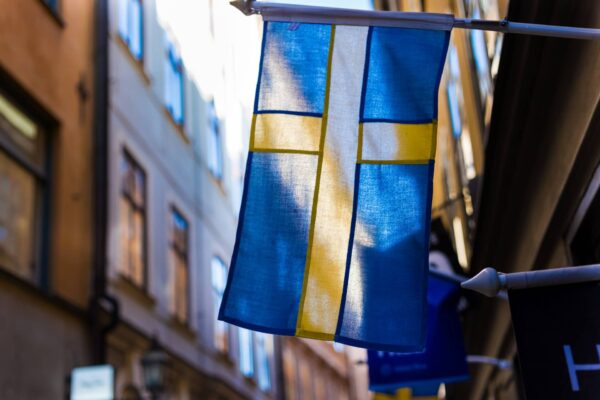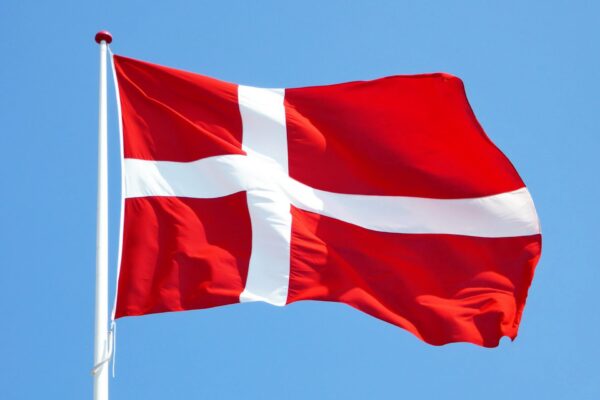In contrast to the other Scandinavian countries, Iceland’s history is rather young. However, even though the country can be dated back to the early Middle Ages, the current flag has only been enshrined in law since 1915. Find out why this is and what the Icelandic flag means.
Appearance of the Icelandic flag: what does the Icelandic flag look like?
The Icelandic flag features a red cross with a white border on a blue background. As with the Norwegian flag, for example, this is shifted inwards. The aspect ratio is 18:25.
History of the Icelandic flag
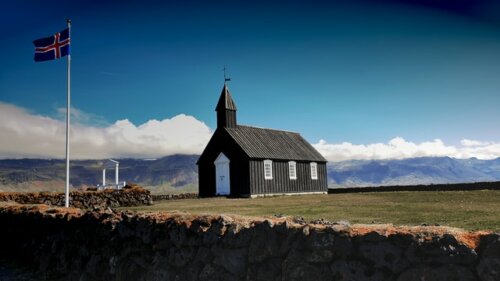
The history of the Icelandic national flag began comparatively late. While the Danish flag, which is considered one of the oldest in the world, can be traced back to the 13th century, the flag of Iceland was not officially adopted until 19 June 1915.
First versions of the Icelandic flag
The first design for an Icelandic national flag can be found in 1897 in the country’s first daily newspaper, Dagskrá. Its founder, the poet Einar Benediktsson, proposed a white Scandinavian cross on a blue background. This version was called Hvítbláinn (loosely translated as “the white-blue”).
Unofficially, this version prevailed at first, but the Danish government, which still had political power over Iceland at the time, tried to prevent the use of the Hvítbláinn.
This action, however, strengthened the Icelanders’ resolve to enshrine their own flag in law. However, according to the flag committee, the Hvítbláinn was too reminiscent of the Swedish flag and the Greek naval flag, so it was rejected. The adopted version is the one we know today.
Meaning: what does the Icelandic flag stand for?
Scandinavian cross: similarities betweeen the Scandinavian flags
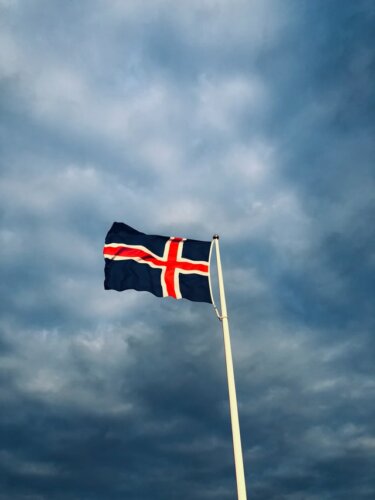
Like almost all Scandinavian national flags, the Icelandic flag bears the so-called Scandinavian cross, also known as St Philip’s cross.
Originally a religious symbol, it nowadays symbolises the unity of the Scandinavian countries through their shared values.
In reference to the Southern Cross, which connects many countries in the southern hemisphere, it is known as the Northern Cross.
Colours of the Iceland flag
The design chosen by the Althing, the Icelandic parliament, contains colours that symbolically represent Iceland. The dark blue background symbolises the Atlantic Ocean and the blue sky above the island. The red and white of the cross symbolise the ice of the glaciers and the volcanic activity that characterises the country’s geography.
Flag days: when is the Icelandic flag hoisted?
The Icelandic flag days were established in 1991 and mainly include high Christian holidays. In contrast to Denmark, Sweden and Norway, the birth and death anniversaries of a royal family do not play a role. Instead, the birthday of the Icelandic president, Sailor’s Day and the day the republic was founded are added.
Flags are flown in Iceland on these days:
| 01/01 | New Year’s |
| Friday in March/April | Good Friday |
| Sunday in March/April | Easter Sunday |
| First Thursday after the 18/04 | Traditional start of summer |
| 01/05 | Labour Day |
| Sunday in May/June | Whitsunday |
| First Sunday in June | Sailor’s day |
| 17/06 | National Day |
| 26/06 | Birthday of president Guðni Th. Jóhannesson |
| 01/12 | Start of the advent season |
| 25/12 | First Christmas Day |
